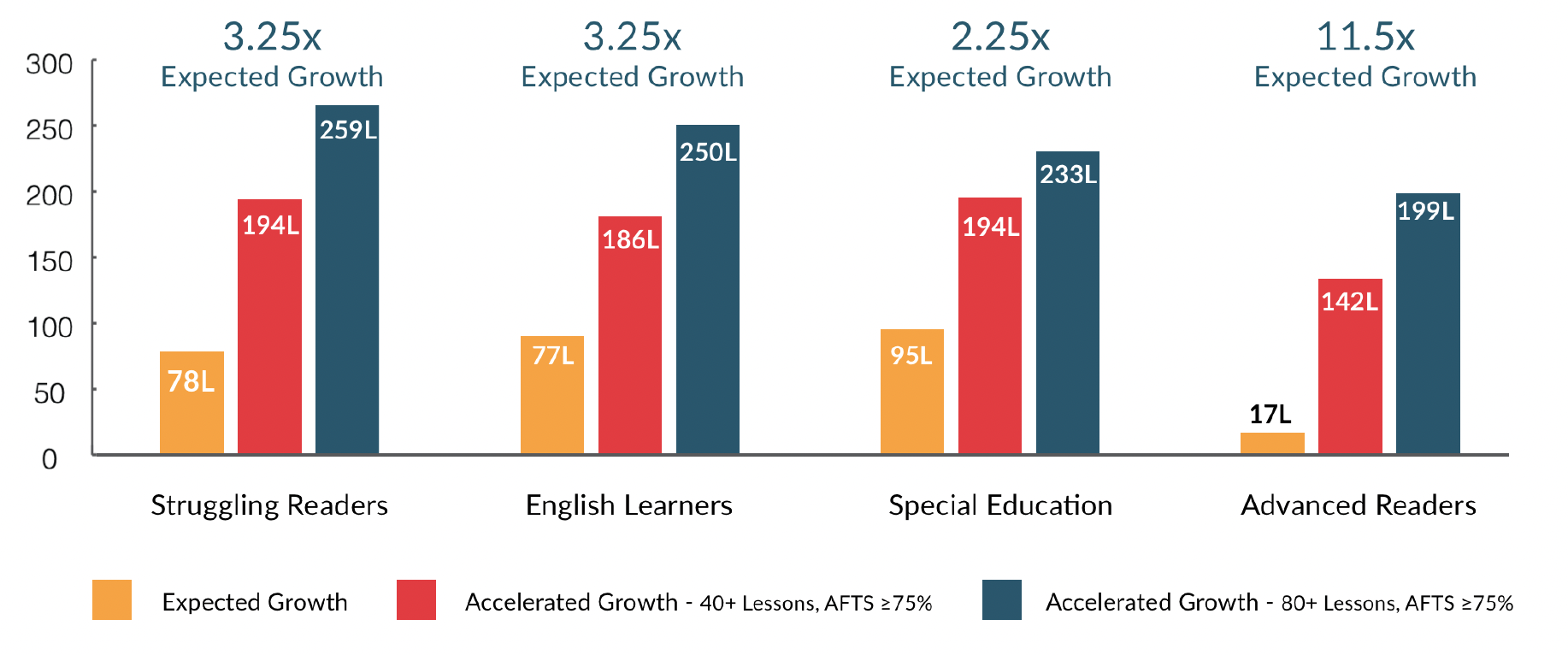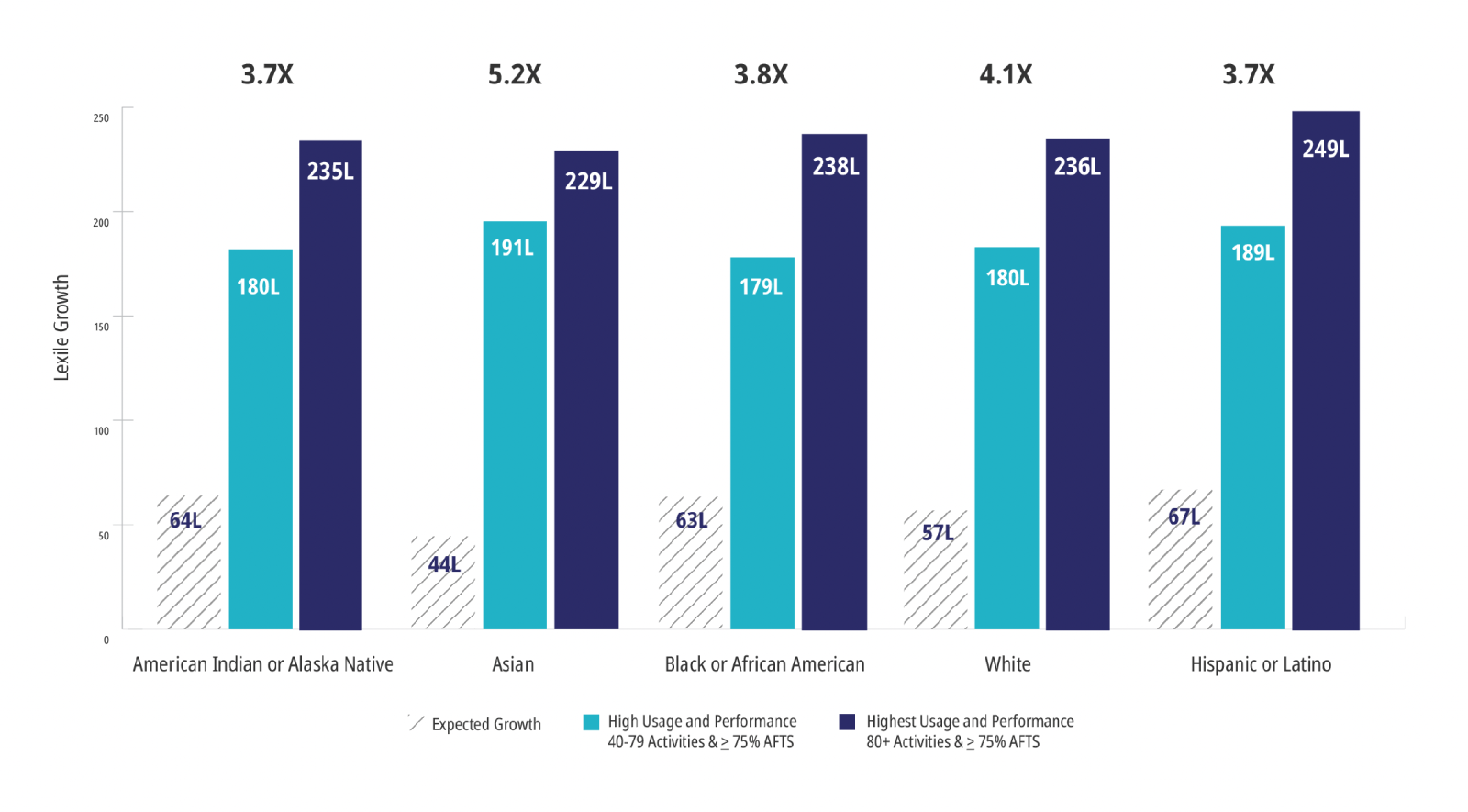Because they were unable to access engaging education, many students — especially those most vulnerable — have fallen even further behind. Research also shows that students are facing a higher rate of mental health issues like anxiety and depression. With strategies to accelerate learning, such as effective reading intervention, we can address some of the biggest challenges education is currently facing.
School closures due to COVID-19 caused up to 20% of learning loss. (Source: Center for College & Career Readiness and SPN)
Read the StudyAlmost 50% of students say they need mental health services to fight stress and uncertainty due to COVID-19. (Source: EdSource)
Many teachers and students lack the experience and resources needed to use education technology effectively.
Literacy is the foundation for success in every subject and the launch pad for college and career readiness. Now is the time for schools and districts to help students get past unfinished learning and unlock their potential through accelerated learning growth supported by effective education technology.
Former President Barack Obama
When it comes to literacy gains, accelerated growth happens when a student’s actual growth goes beyond expectations based on their current reading level and the time they participate in learning. For example, with the right reading intervention programs, students have been shown to boost their Lexile reading levels beyond expectations, anywhere between 3.25X for struggling readers to 11.5X for advanced readers.
 Read the Study
Read the Study
Reading intervention strategies such as differentiated content, learning scaffolds, and ongoing assessments can help keep your students engaged and progressing.
Differentiated content: Every student has different needs. That means you’ll see more learning gains if you adapt instruction and content to meet their abilities, interests, styles, and preferences. You can do this by first getting to know your students’ reading levels, so you have a benchmark to measure progress against throughout the year. Then, provide each student with differentiated content that matches those individual Lexile levels, so that every student has a chance to succeed.
Learning scaffolds: As students progress in their literacy journey, they should be given the support or enrichment they need to move to the next reading level based on their strengths and needs. This is where scaffolding comes in. For struggling readers, scaffolding could include vocabulary or concept previews, extra time to complete activities, access to Spanish translation for English learners, or audio support for articles. For more advanced readers, you might provide extension activities or more advanced Lexile assessments.
Ongoing assessments: To keep readers advancing through their Lexile levels, it’s important to conduct regular assessments for comprehension, and then adjust instruction based on performance. When students are able to see their progress, they can celebrate their wins and better understand where they need to improve. And educators can see where students need more help. Education technology like Achieve3000 Literacy can help make this process easier, automating steps so educators can ensure no one falls through the cracks.
Our kids are capable of learning all kinds of things. If we can make connections between who they are and what we need to teach them, that's when education becomes powerful.
Dr. Pedro Noguera, Dean of the Rossier School of Education at the University of Southern California
To accelerate learning, students need to be able to relate to what is being taught. That means getting to know your students and providing culturally responsive literacy instruction to every child. Here’s how:
Aim for Equity: Equity means meeting the needs of all children, including their academic, physical, social, and emotional needs. When we understand the needs and interests of the whole student, we can find ways to make education meaningful and increase learning gains.
By overcoming complacency and bias, including racial, cultural, and linguistic bias, schools and districts can create the conditions to meet the needs of our students.
Go Beyond Teaching Skills: To keep instruction culturally relevant, educators need to supplement skills instruction with more intellectually stimulating teaching. In her book, Cultivating Genius: An Equity Framework for Culturally and Historically Responsive Literacy, Dr. Gholdy Muhammad draws on the work of black literacy societies, which had five central goals for learning or “pursuits” that she says every student should have:
Build Better Relationships with Students: Getting through to your students starts with building strong relationships. That means knowing the answers to three important questions:
Educators who share their own experiences provide students with more opportunities to relate. They should also get to know more about students’ fears, hopes, and dreams, and talk about what they know during instruction so students will feel like their learning is relevant.
Get Your Free GuideTo become the educator your students need, you’ll need to remember that the most important thing in education is not academic. It’s that relationships matter.
Dwayne Reed, CEO of TeachMrReed
Partnering to Provide Culturally Diverse Literature and Unlock the Potential in Every Student
NABU is a nonprofit organization that seeks to solve the imbalance in the creation and distribution of books by using technology to make books available for free to all children in their native languages. They create original local language books by training writers and illustrators. Achieve3000 has partnered with NABU to provide culturally diverse, authentic mother tongue stories in our Achieve3000 Literacy collection.
Accelerating Reading Gains for All Student Populations
According to the 2021 National Lexile Study, which studied the impact of Achieve3000 Literacy on student reading growth, students across all racial and ethnic groups who used Achieve3000 Literacy saw similar levels of acceleration both before and during the pandemic. Actual growth exceeded expected growth most in students with the highest usage and performance.
 Read the Study
Read the Study
While many secondary educators might not be familiar with teaching foundational literacy skills, they still need to be able to help students struggling in this area. Often, these students’ foundational reading skills are not strong enough to successfully navigate the increased rigor of academic content in grades 6-12. Without targeted intervention, these students will continue to fall behind, lose confidence, and are likely to eventually drop out of school.
Achieve3000 Literacy WordStudio makes it easy for teachers to provide instruction in phonics, decoding and word recognition through teacher-led instructional videos that can be used to support individual or group instruction. This foundational literacy collection provides many opportunities for guided and independent practice, as well as engaging lessons to test skills. It also includes extensive support materials for teachers.
To determine the most impactful skills for inclusion in the WordStudio lessons, Achieve3000 completed a literature review that included some of the most recognized experts in foundational literacy, such as Foorman and Torgesen, Beck, Denton, and Slavin. Achieve3000 also worked with licensed reading intervention specialists to identify the key foundational skills that challenge secondary students who have difficulty with reading comprehension and fluency. Each skill is addressed individually and comprehensively, offering students opportunities to apply their knowledge of the skill in various ways throughout each lesson.
There’s only one way to know if reading intervention strategies are actually working: measure student reading growth on an ongoing basis. In order to do that, you need a scientific approach that places both the reader and the text on the same developmental scale. That’s why MetaMetrics®, an educational measurement and research organization, developed a framework for calculating expected, actual, and accelerated growth.
Read the WhitepaperThe Lexile Framework® for Reading, is recognized as the most widely used reading measurement in schools and districts today. Taking a scientific approach, the framework measures both a student’s reading ability and the complexity of a text on a single developmental scale, providing a way to match readers with just-right text. The measurement is expressed as a number, followed by “L” for Lexile (i.e. 850L). Reading ability is measured based on actual assessments, rather than grade level or age.
In Achieve3000 Literacy, students start with a LevelSet™ assessment to determine their current Lexile level. As they move through lessons, embedded assessments keep students and teachers updated on progress and provide an indicator of future performance.
I’ve seen growth across the board with Achieve3000 Literacy, from our most struggling to our most advanced readers, which is really incredible.
Adrianna Ramirez, 6th Grade Teacher, Liverpool School District, NY